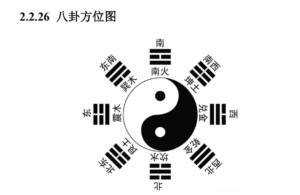
Qimen Dunjia is a high-level prediction and decision-making system in traditional Chinese mathematics. Its core is not a simple “truth” or “superstition”, but a complex deduction method based on space-time models and symbol systems, which aims to reveal the relationship between heaven and man and grasp the underlying laws of changes in things. The following analyzes its essence from the perspectives of philosophy, practice and science:
1. Philosophical core: dynamic universe view of the unity of heaven and man
Holographic model of space-time integration
Qimen Dunjia uses the Luoshu Nine Palaces as a framework, combined with symbols such as heavenly stems and earthly branches, eight gates, nine stars, and eight gods, to construct a multi-dimensional space-time coordinate system. Its essence is to simulate natural laws (such as the circulation of solar terms and the rise and fall of yin and yang) through symbols, linking human affairs with the changes of heaven and earth, and reflecting the philosophical idea of ”correspondence between heaven and man”.
The dialectical logic of Yin and Yang and the Five Elements
Through the dynamic balance of the unity of opposites between Yin and Yang and the generation and restraint of the Five Elements, the essence and transformation conditions of contradictions in things are analyzed (such as “value symbol” as the leading party of contradictions and “value envoy” as the execution path), emphasizing the operability of the law.
2. Practical wisdom: the deductive logic of symbol system
The symbolic association
Each symbol (such as “Tian Pengxing” for adventure and “Si Men” for ending) is not a metaphysical label, but an abstract summary of the laws of reality. For example:
Heavenly time (nine stars): symbolizes macro trends (such as Tian Chongxing for sudden changes);
Geographical benefits (eight gates): symbolizes environmental conditions (such as Sheng Menli for seeking wealth);
Human harmony (eight gods): symbolizes potential psychology and decision-making patterns (such as Taiyin for secret planning).
Causal deduction of pattern
Analyzing the direction of events through symbol combinations (such as “Yi + Xin” for Qinglong’s escape, “Ren + Gui” for the four sheets of the sky net) is essentially a combination of induction and analogical thinking, similar to the “correlation analysis” in modern systems theory.
3. Controversy and enlightenment from a scientific perspective
Non-empirical but inspiring
The deduction of Qi Men Dun Jia lacks the repeatable experimental verification of modern science, but its symbol system has methodological value for simulating complex systems (such as multi-factor linkage and nonlinear relationships), similar to fuzzy mathematics and decision tree analysis.
Application of psychology and behavioral science
Through symbolic metaphors (such as “螣蛇” means false alarm), decision makers can be assisted in perceiving potential risks. It is essentially a tool for reconstructing cognitive frameworks, similar to the “mental model” of modern psychology.
IV. Modern value: decision-making tools and cultural wisdom
Auxiliary reference for strategic decision-making
In the fields of business and military, Qimen Dunjia can provide multi-dimensional perspectives (such as time window selection and resource allocation priority), but it needs to be used in combination with rational analysis rather than absolute reliance.
Living inheritance of traditional culture
Its theoretical system carries the wisdom of ancient Chinese astronomy, calendar, and philosophy, and is an important entry point for studying oriental thinking patterns.
Summary: What is the “truth of Yixue”?
The “truth” of Qimen Dunjia is not in the mysterious prophecy, but in the symbolic expression of laws and dynamic deduction logic. It provides a cognitive method that transcends linear thinking. Its value lies in inspiring people to look at problems systematically and dialectically, rather than mechanical fatalism.
Key point: Rational use as a tool, blind superstition leads to distortion.








Leave A Comment